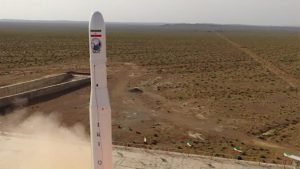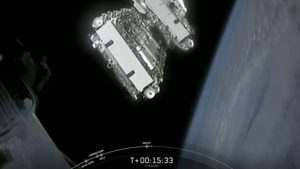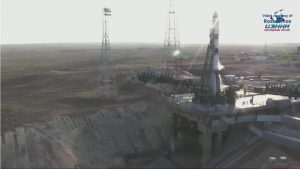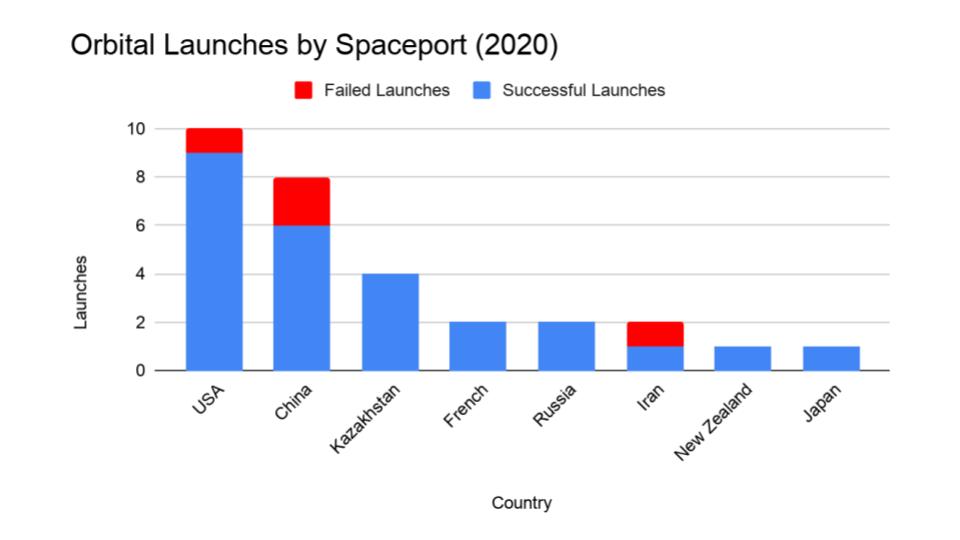
Iran launched their first military satellite Noor-1, SpaceX launched another 60 Starlink satellites and Roscosmos launched the Progress MS-14 resupply mission.
Links
Iran launched their first military satellite Noor-1
SpaceX launched another 60 Starlink satellites
- Starlink-7 (RocketLaunch.live)
- Fairing Recovery Attempts (ElonX)
- List of Cores (r/SpaceX)
Roscosmos launched the Progress MS-14 resupply mission
- Progress MS-14 (75P) (Rocketlaunch.Live)
- “Victory Rocket” with cargo for the ISS delivered to orbit (RIA, Russian)
- “Progress MS-14” set a record in flight time to the ISS (TASS, Russian)
Transcript
Hello, and welcome to the Daily Space for today Wednesday, April 29, 2020. I am your host Annie Wilson and I AM BACK! Most Mondays through Fridays, our team will be here putting science in your brain.
Usually Wednesdays are for Rocket Roundup, and it’s been yet another week without launches.
Let’s get to it, shall we?

Iran launched their first military satellite on April 22nd at 03:59 AM UTC. Noor-1 was launched into orbit by Iran’s Revolutionary Guard Corps on the first flight of a Qased rocket.

Before I get into the details of this launch, I’d like to take a moment to remind you that we don’t discuss politics in depth. I’m going to state a few facts about the political climate and then move on from it.
Iranian launches are fairly rare with only a handful occurring each year. Due to current sanctions by the United States, the US State Department condemns these launches and essentially states that Iran is furthering development on their ballistic missile program under the guise of peaceful aerospace applications.
With that out of the way, on to the good stuff.
Because this was a military mission from Iran, not a lot of details are known about the satellite or the launcher.
Here’s what we do know: Noor-1 is a six unit cube-sat that probably weighs between six and ten kilograms, was built entirely in Iran of Iranian components, and is in low earth orbit. The launcher is thought to be a modified missile which uses both liquid and solid fuel and was launched from a transporter-erector-launcher, a specialized vehicle used for transporting and launching missiles.

Next up, SpaceX launched another 60 Starlink satellites on April 22 at 7:30 PM UTC onboard a Falcon 9 rocket that took off from LC-39A at Kennedy Space Center.

This was the seventh Starlink launch which brings the number of operational and healthy Starlinks up to about 396 out of the total 420 satellites launched.
This launch was the fourth flight of core B1051. The first stage and both fairing halves were successfully recovered.
The next Starlink launch is currently scheduled for May 7th from SLC-40.

Finally, Roscosmos launched the Progress MS-14 resupply mission on April 25 at 01:51 AM UTC from Baikonur.

Progress MS-14 reached the space station after a quick flight of only three hours and twenty minutes (just 2 orbits of the ISS). The craft docked automatically at the aft port of the Zvezda Service Module, part of the ISS’ Russian segment.
Onboard was two and a half tons of cargo, which consisted of food, water, oxygen, fuel, and equipment. Among the cargo delivered were fresh oranges and grapefruit for the crew.

To wrap things up, here’s a running tally of a few spaceflight statistics for the current year:
- Toilets burned up: 2
- Total new satellites in orbit: 405 (includes those launched from other in-orbit craft, such as the ISS)
- Total satellites from launches: 391
- Total 2020 launch attempts: 30 (including 4 failures)
I keep track of orbital launches by where they launched from. Here’s that breakdown:
- USA: 10
- China: 8
- Kazakhstan: 4
- French Guiana: 2
- Russia: 2
- Iran: 2
- New Zealand: 1
- Japan: 1
Your useless space fact for the week comes to us from Dr Patrick Durrell, who reminds us that Mars is the only planet populated entirely by robots.
And that rounds out our show for today.
Thank you all for listening. Today’s script was written by myself and edited by Gordon Dewis. The Daily Space is produced by Susie Murph. Our fearless leader is Dr. Pamela Gay.
This has been a production of the Planetary Science Institute, a 501(c)(3) non profit dedicated to exploring our Solar System and beyond. We are here thanks to the generous contributions of people like you. Want to become a supporter of the show? Check us out at patreon.com/cosmoquestx


 We record most shows live, on Twitch. Follow us today to get alerts when we go live.
We record most shows live, on Twitch. Follow us today to get alerts when we go live.